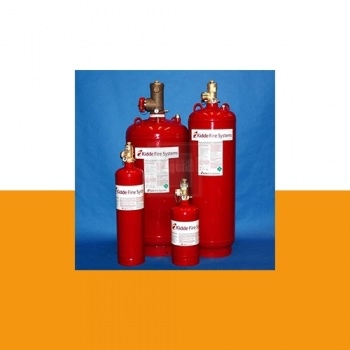
|
Trade Name |
Min. Design Concentration |
NOAEL |
LOAEL |
|
Halon 1301 |
5 |
5.0 |
7.5 |
|
FM-200 |
6.25 |
9.0 |
10.5 |
|
FE-13 |
18.0 |
30.0 |
>30.0 |
|
Novec 1230 |
4.2 |
>10.0 |
|
|
FE-25 |
8.0 |
7.5 |
10.0 |
- Zero Ozone
- Depletion Potential
- Low Atmospheric Lifetime
- Efficient Use of Resources
- Fixed Fire Protection is
- Essentially Non-Emissive
FM-200 Agent
- In Normally Occupied Spaces
- Concentrations up to 10.5% v/v
- In Normally Not Occupied Spaces
- Concentrations up to 10.5% v/v
- Concentrations exceeding 10.5% v/v provide occupants can evacuate within 30 seconds
- Lock-out valve, mechanical time delay, pressure operated siren and signage required
-Zero Ozone
-Depletion Potential
-Low Atmospheric Lifetime
-Efficient Use of Resources
-Fixed Fire Protection is
-Essentially Non-Emissive
Modes of operation
quickly vaporizes when discharged!
Novec 1230 fluid is an advanced halon replacement, designed to balance industry concerns for human safety, performance and the environment.
–Performance
– Health and safety
– Health and safety
– Completely safe and approved for use in occupied spaces
– Best environmental profile of all “active” agent halon alternatives
– Provides minimum business interruption with maximum asset protection
– Ease of transportation
- Low vaporpressure (6 Psig) –bulk air travel
– 11 lb Demo Container,
– 661 lb Drums
– 2425 lb totes
– EPA SNAP/NFPA 2001 standard
– Design concentrations well below safety thresholds
– Clean environmental profile
– GWP = 1; ATM life = 5 days
– Liquid at room temperature > low Pv
– No residue
– Electrically non-conductive
– Cell sites, switching centers
– Oil and gas
FE-13 Systems
What Is FE-13?
FE-13 People Safety
– Tough hazards -mixed flammables
– Variables
– Inerting
FE-13 Agent Characteristics
– Low boiling point = wide temp range
– High velocity = expansion
-Large spaces
-High ceilings
-Clutert
FE-13 and the Environment
FE-13 Applications
FE-13 Strengths
FE-13 Weaknesses
- high pressure system (piping, cylinders etc)
INERT Gas
IG-55
IG-541
– Nitrogen
50%
52%
– Argon
50%
40%
– Carbon Dioxide
0%
8%
What are INERT Gases?
How Does it Work?
Features of Argonite Agent
Benefits of Argonite Agent
Features of Argonite Agent
Argonite Strengths
ENVIRONMENTAL
Argonite Weaknesses
Argonite Summary